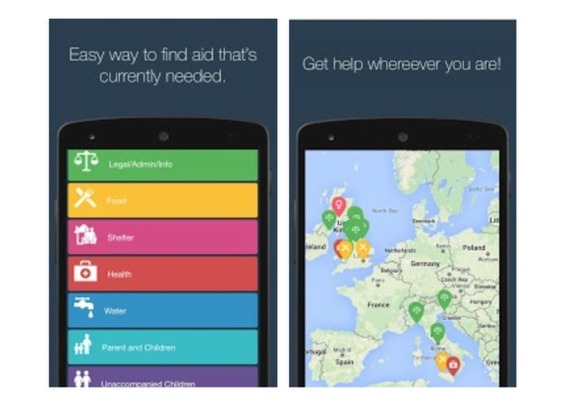The world waited with bated breath and then exhaled last Thursday when global leaders gathered in London to pledge support for Syrian refugees. Collectively, the group pledged $10 billion in aid.
During a news briefing, UN Secretary General Ban Ki-moon said, "Never has the international community raised so much money on a single day for a single crisis."
With at least 11 million people--half of the Syrian population--internally displaced, and nearly 5 million people fleeing to neighboring countries, let's hope the $10 billion is allocated efficiently. After all, there is an onslaught of misinformation regarding the refugee crisis pervading the media landscape in all directions. But it's not for lack of thousands of humanitarians working to create solutions to address the gaps in data. Shelley Taylor of Trellyz is one of the entrepreneurs leading the charge. Harnessing her community building skills, she's built the Refugee Aid App, which provides a single point for refugees to find information, and allows NGOs to deliver aid to where it's most needed. During times of crisis, connectivity and efficiency are everything.
We caught up with Shelley to find out what kind of impact the location-based tool is having on Syrian refugees and what's needed to take the initiative to the next level.
TB: You started the first-ever platform to show all aid by organization and type. How is the rollout of the app progressing?
ST: We built the Refugee Aid App platform in November, and since then we have been signing up charities and NGOs so that we would have sufficient numbers in the two countries we are going live with first - Italy and the UK. We concentrated on getting the participation of some of the largest aid organizations, because our platform only shows refugees' official aid.
There are other apps out there that are available in some cities and countries where the aid is crowd-sourced, meaning anyone can add information and make it visible to refugees.
We chose to make our platform only available to trusted charities and NGOs because we were worried (as are the aid organizations) about unfiltered and incorrect information being provided to migrants.
We want to be sure that no one can use our platform for trafficking women or children, so we are very strict about who can use it. Now we have the following organizations using the platform: British Red Cross, Italian Red Cross, Save the Children, and Caritas, among many others.
TB: Are you facing any barriers with refugees not having smartphones?
ST: All the research I have seen says that the large majority of refugees, approximately 85% of Syrian refugees, have smart phones. They use them to travel, relying on Whatsapp and Facebook to find routes and to navigate their journeys. A very large percentage of Syrian refugees are actually middle class and just trying to get to safety. They typically travel with money and smart phones, though very little else.
TB: What do you need to keep driving the platform forward?
ST: Until now my company, a small and private tech startup, has covered the cost of all of the technology and staffing required to make this platform and onboard the non-profits. We would love to roll it out in all countries in Europe, and al of our major aid organization partners would as well. But in order to roll out everywhere, we will need some funding. We have applied for a couple of grants. We would like to find corporate partners who would like to begin building relationships with migrants, at all stages of their journey.
For example, mobile operators could potentially offer locations for their sim cards on the map that refugees have in our app. We would appreciate partnerships with companies like Amazon who could reduce their prices for the hosting services we use to support the platform.
Any funding we would use to cover the costs of on-boarding NGOs. We would eventually like to move to a model where aid organizations subscribed to use the service, something very small, but so that it could be self-sufficient.
A challenge for a small private company that can create technology that will dramatically improve the delivery of aid resources is that we are not in a position to support the five million refugees in Europe, even if we have created the first platform that allows all aid organizations to improve their delivery and reduce their costs. I have to run a profitable business in order to be in a position to absorb all of the costs of running this platform. I'm not sure that is a realistic model for other technology solutions, so it would be great if aid organizations and funding sources could find a way to participate in solutions that will improve their efficiency.
The Refugee Aid App is available on Android and iPhone. To learn more about the tool and support it's development, go to RefugeeAidApp.com.
This post was originally published on TheToolbox.org, a tech and social impact initiative co-founded by Peter Gabriel and powered by Humanise, Inc.

